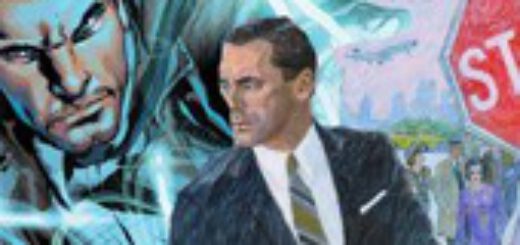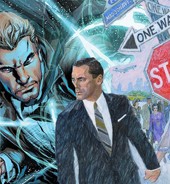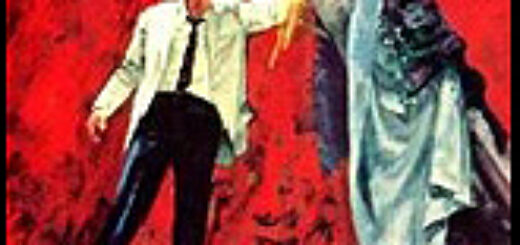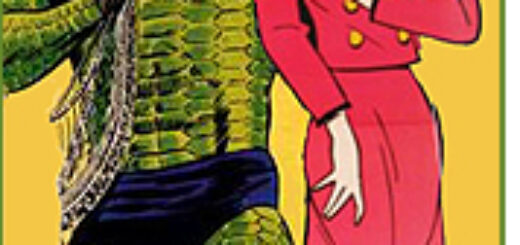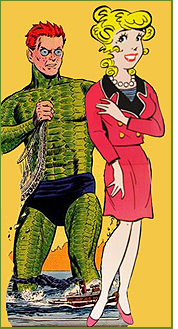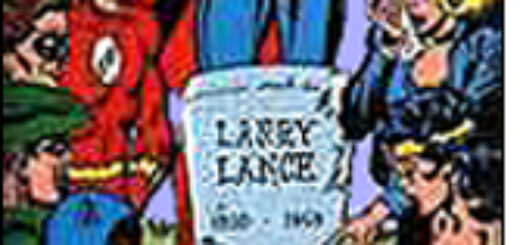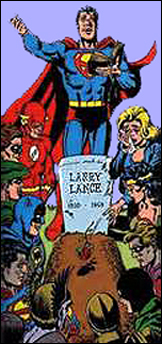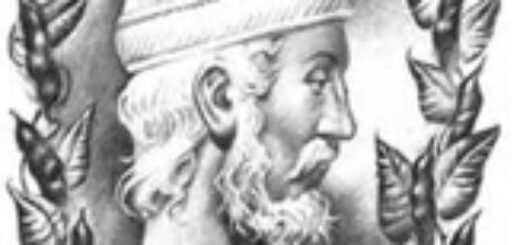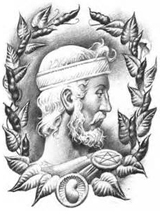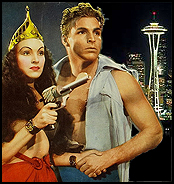Dennis O’Neil: Giants
 The latest issue of Roy Thomas’s fine magazine Alter-Ego arrived in today’s mail. This one was dedicated to the late Joe Kubert, who died some seven months ago. It arrives a couple of days after I learned of the passing of Joe’s contemporary (and my ex-boss) Carmine Infantino. The synchronicity is odd and painful. These two men were excellent artist/storytellers and quite a bit more and they were among the first of their kind; they helped invent comic books.
The latest issue of Roy Thomas’s fine magazine Alter-Ego arrived in today’s mail. This one was dedicated to the late Joe Kubert, who died some seven months ago. It arrives a couple of days after I learned of the passing of Joe’s contemporary (and my ex-boss) Carmine Infantino. The synchronicity is odd and painful. These two men were excellent artist/storytellers and quite a bit more and they were among the first of their kind; they helped invent comic books.
Years back, when I was chipper and unbald and fanzine folk began asking to interview me, I was flattered and – sure, always happy to open my gob. And so I did. But I wondered: shouldn’t these young journalists be talking to the older guys, the ones who were there at the beginning? Because most of them were already past youth and, as novelist Samuel R. Delany observed at the time, comics were still new enough for interested parties to read almost everything that had been published. Wasn’t this an unparalleled opportunity? Didn’t the happy coincidence of accessible talent and available work provide a chance to really examine, closely, the emergence and evolution of an art form? Because, for obvious reasons, this ideal coincidence wouldn’t be in effect forever. Wasn’t a lot of interesting and potentially valuable information in danger of being lost?
Well, maybe some was lost, or will yet be lost, but probably not as much as I feared. There were interviews that I knew nothing about and a lot of the pioneers still had plenty of talk left in them. And communication was about to boom: the quaint mimeoed and hectographed fanzines were giving way to stuff produced by slicker technologies and those, in turn, were in the shadow of forthcoming electronica, an example of which is before you at this instant. Scholars and hobbyists alike are continuing to investigate and document comics and please allow me a modest hurray.
It seems safe to say that comics are the most documented art form in history (though cinema may have some claim to that honor.) We have large amounts of what. Now, how about some more why? There are, I hereby aver, correspondences between the evolution of comics, particularly superhero comics, and that of mythology/religion. A properly focused exploration into one might reveal something about the others and, storytelling being one of mankind’s primary activities, this revelation could help us discover meanings that have so far eluded us. Another possibility: the influence cartooning in general and comics in particular has had on journalism.
Does anyone sniff a term paper? A thesis, even? Or have such papers already been written? Could be, I guess.
Meanwhile: we have lost two of our founders, and in our usual helplessness, we can do no more than mourn, and we should.
FRIDAY: Martha Thomases
SATURDAY: Marc Alan Fishman


